Email marketing is still one of the best methods to start a campaign and communicate with the audience. Furthermore, it’s one of the oldest forms of communication used in online marketing strategies, so it had enough time to be refined and reshaped as a marketing tool.
As such, we should try to apply the lessons email marketing is teaching us to other communication platforms that only recently became wildly popular.
In this spirit, we have listed several of the most important lessons that can be applied to social media channels.
#1: The Design is Not Everything
Some marketers tend to focus more on the visual aspect of a social media campaign and neglect the message. While visuals are important, your campaign, regardless of the channel, should also send a clear message, guiding anyone interested towards a final purpose (making a purchase, participating in an event, subscribing to your newsletter, and so on).
Just like with emails, the way you express your thoughts and send out the message is just as important as the overall look.
A good example of an email that took it a bit too far with the visuals is this welcome message from PostPlanner. Anyone who registered to their campaign received an email that looked something like this:

As you can see, the message is loaded with cool-looking visuals, but because you’d have to scroll the page several times, most of the recipients never got the message!
And here is an example of an email design that makes good use of space and combines both visual and text elements (from Envira Gallery).
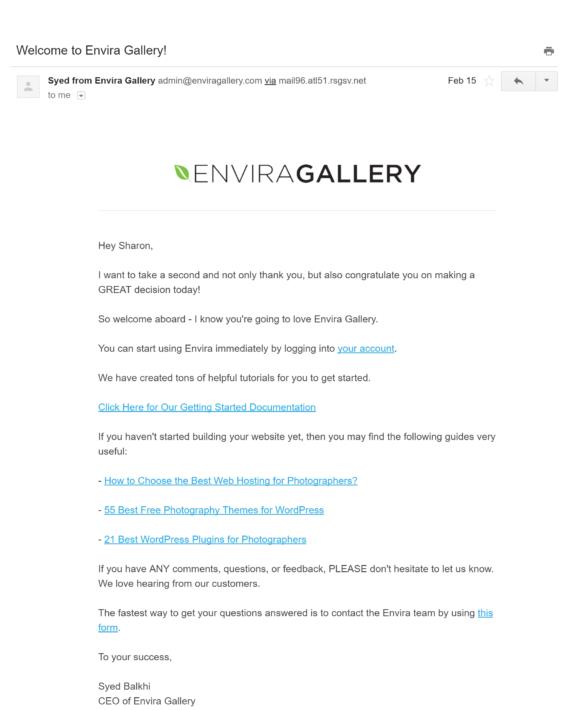
In comparison with the one from PostPlanner, the message is clearly in focus, and the recipients get to read everything in one take.
The trend to lighter design can be found everywhere. A good example is to have a look at the Starbucks logo change over time:
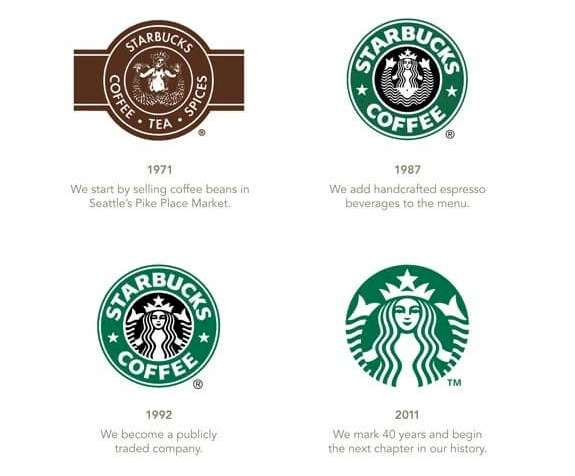
The logo has fewer details now and it’s not overwhelming.
Now, social media platforms are a bit more focused on visual, which is natural, but you need to know when to stop. So, have a look at your latest posts and see if there is a balance between graphics and the message you want to send.
#2: Add Value to your Followers’ Life
We all know that the frequency of posting is important on social media platforms. However, you also need to consider if you’re creating value through what you share. Are you sharing just for the sake of filling in your daily quota, or are you truly enriching your followers’ lives?
For instance, many online platforms use emails to convince their users to continue their online activities. Let’s take Twitter as an example; to get you to browse more, they’ll send emails with accounts that fit your current browsing pattern.
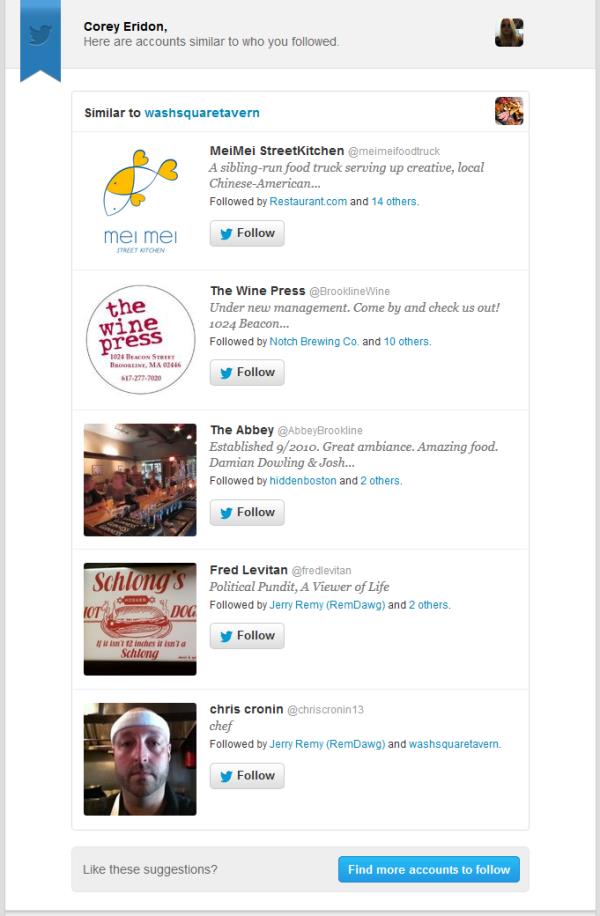
The user appreciates their effort and gets to learn about other cool accounts that they may not have discovered otherwise. But the reason this type of email creates value is that the user is on Twitter, is actively following similar accounts, and are open to recommendations.
The exact opposite of such an email would be to create a Back to School campaign and send it to an unfiltered database of email accounts without knowing if the recipients are still connected with school life (are in school or have children who go to school). This would be the very definition of an email that doesn’t create value and gets to be marked as spam.
So, to get people interested in your social media channel make sure you know enough about their preferences, wishes, and overall lifestyle. Once you know this, it will be easier to create value through your content.
#3: It’s All About Engagement
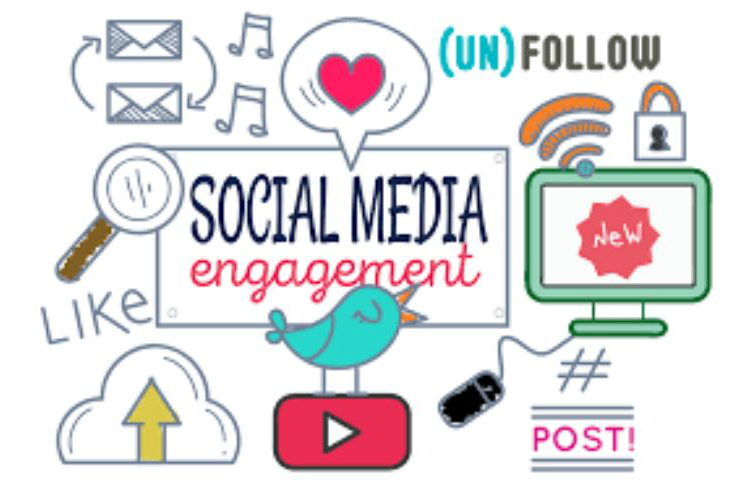
How do you measure the success of a social media campaign? If your first thought went to the number of new followers you gained or the recent increase in likes, we’re sorry to tell you, but you are wrong.
According to Foundr.com, the success of anything you do online is measured in the engagement you manage to create among the audience. This means getting them involved in the campaign, which translates into detailed comments, shares, and taking that CTA you’ve been promoting.
And this is yet another lesson we learned from email campaigns! As it turns out, there is such a thing as email fatigue – a state where subscribers’ involvement drops due to a series of factors. At this stage, some people will start to unsubscribe, but you should take it as a win.
This process allows you to trim the list and filter out the subscribers who don’t feel engaged by your content. In the end, you’ll only get to communicate with the ones who really care about your campaign, and this is a huge win!
#4: Test New Strategies
If there’s one thing you learn while doing email marketing is that the audience evolves. If you don’t keep up with this trend, your campaign will soon be outdated and irrelevant.
The same happens in social media – you shouldn’t follow just one formula. Continue improving and upgrading your strategies.
A good example of a company keeping up with its audience’s needs is Uber. They always focus on sending emails that are short, easy to read in just one view, and engaging. And here is the email they sent when they wanted users to integrate the Uber app with their calendar:
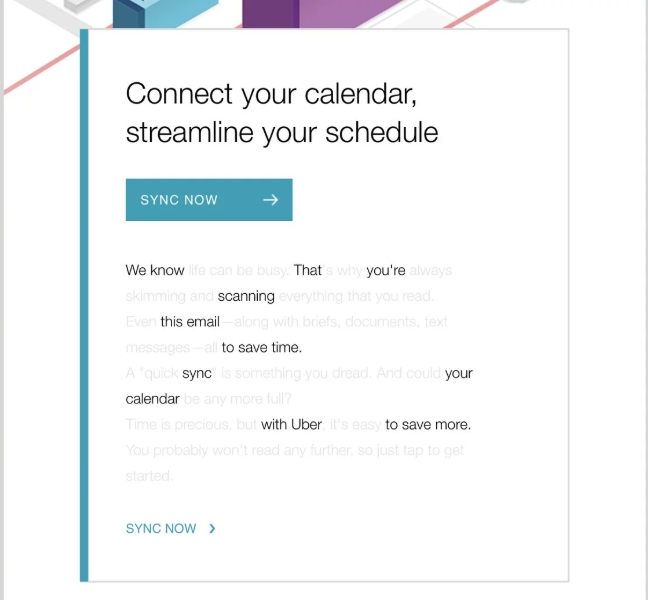
The email is refreshing, funny, it sends the right message, and has users actually reading it! What’s even better, these guys managed to create valuable emotions which will definitely be shared with some friends and family i.e. word of mouth marketing would roll in and your marketing efforts would be doubled now.
When was the last time your emails or social media posts got that much attention?
#5: Be Consistent
You want to make sure your way of creating content is unique and easily recognizable across different channels. So, integrate the messages you’re spreading via email with the ones spread via social media and other platforms.
This is a lesson you can easily learn from big companies such as Amazon or Spotify. If you take a look at their campaigns, both in social media and via email, you’ll notice they use the same colors, templates, logos, and sometimes images to create a sense of consistency.
Wrap Up
At the end of the day, we have a lot to learn from older platforms, but it helps to keep big brands under observation. They are the first ones to respond to trends, and you’ll have a sense of what’s happening in the world of marketing without damaging your reputation.


